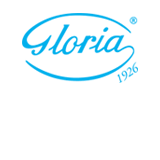An original technique for the treatment of Axillary Web Syndrome: the Onorato-Ausbergher method
Submitted: 25 March 2024
Accepted: 2 June 2024
Published: 26 June 2024
Accepted: 2 June 2024
Abstract Views: 301
PDF: 0
Publisher's note
All claims expressed in this article are solely those of the authors and do not necessarily represent those of their affiliated organizations, or those of the publisher, the editors and the reviewers. Any product that may be evaluated in this article or claim that may be made by its manufacturer is not guaranteed or endorsed by the publisher.
All claims expressed in this article are solely those of the authors and do not necessarily represent those of their affiliated organizations, or those of the publisher, the editors and the reviewers. Any product that may be evaluated in this article or claim that may be made by its manufacturer is not guaranteed or endorsed by the publisher.

 https://doi.org/10.4081/vl.2024.12501
https://doi.org/10.4081/vl.2024.12501






